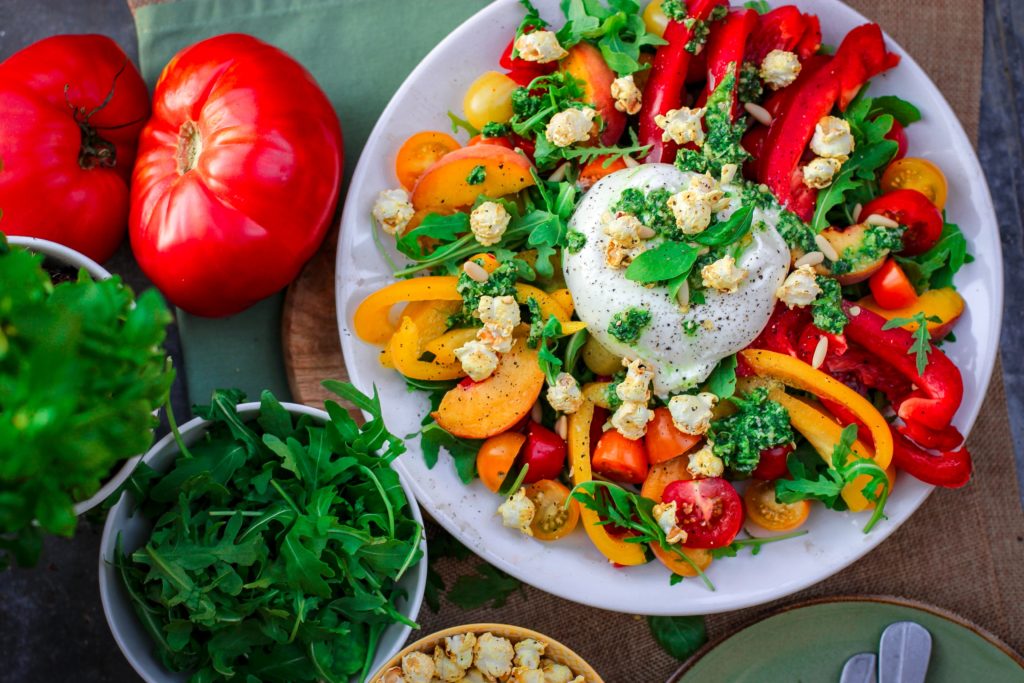I have loved eating salad most of my adult life, but it was not until I realized that the key to making a mouth-watering, healthy, and filling salad was showing off my personality and mood. Growing up in a chef family (both my mom and dad were trained professionally in the culinary field), making everything from scratch was a standard way of life.
My sister and I were not always happy about mom’s healthy choices for us, and vegetables were the last thing we wanted to see. When she started introducing us to the concept of playing with food, things slowly changed. Picking produce we would eat, then having a cutting board and knife to chop everything up, and finally arranging the madness into a rainbow on our plate was entertaining. Or at least, it was for a kid!
As teenagers, we learned prep is just too much work. After getting over having fun mixing veggies of different colors and textures, my mom had to come up with something new. And that was making salad dressings. We discovered that creating a delicious harmony of flavors with dressings was not only science but also an art form.
Making a salad sounds simple enough, right?
In today’s slower-paced society, due to the pandemic, where the idea of prepping food for a home-made meal is more realistic, people are still not attracted to making salads. And it shows. It is not a coincidence that some people are experiencing a phenomenon called Quarantine 15.
Are less movement and reaching for high-calorie options to blame for that? Probably! All the slicing, dicing, mixing of ingredients remain boring and still take TOO MUCH TIME.
While I do not disagree, implementing some smart habits can cut down on the annoyance factor. Here is what I suggest you do.
Although using fresh, organic, (maybe even home-grown) produce is always the best, getting a batch of your favorite vegetables ready and storing them in the refrigerator in a plastic bag with a paper towel, saves up to 2 days worth of chopping-time.
You can always go to your favorite grocery store or market, but you have less control of freshness and quality, and also what gets into your assortment.
My other recommendation is to have some staple toppings handy in your pantry for adding fun, flavor, and motivation back to the mix. More on this later.
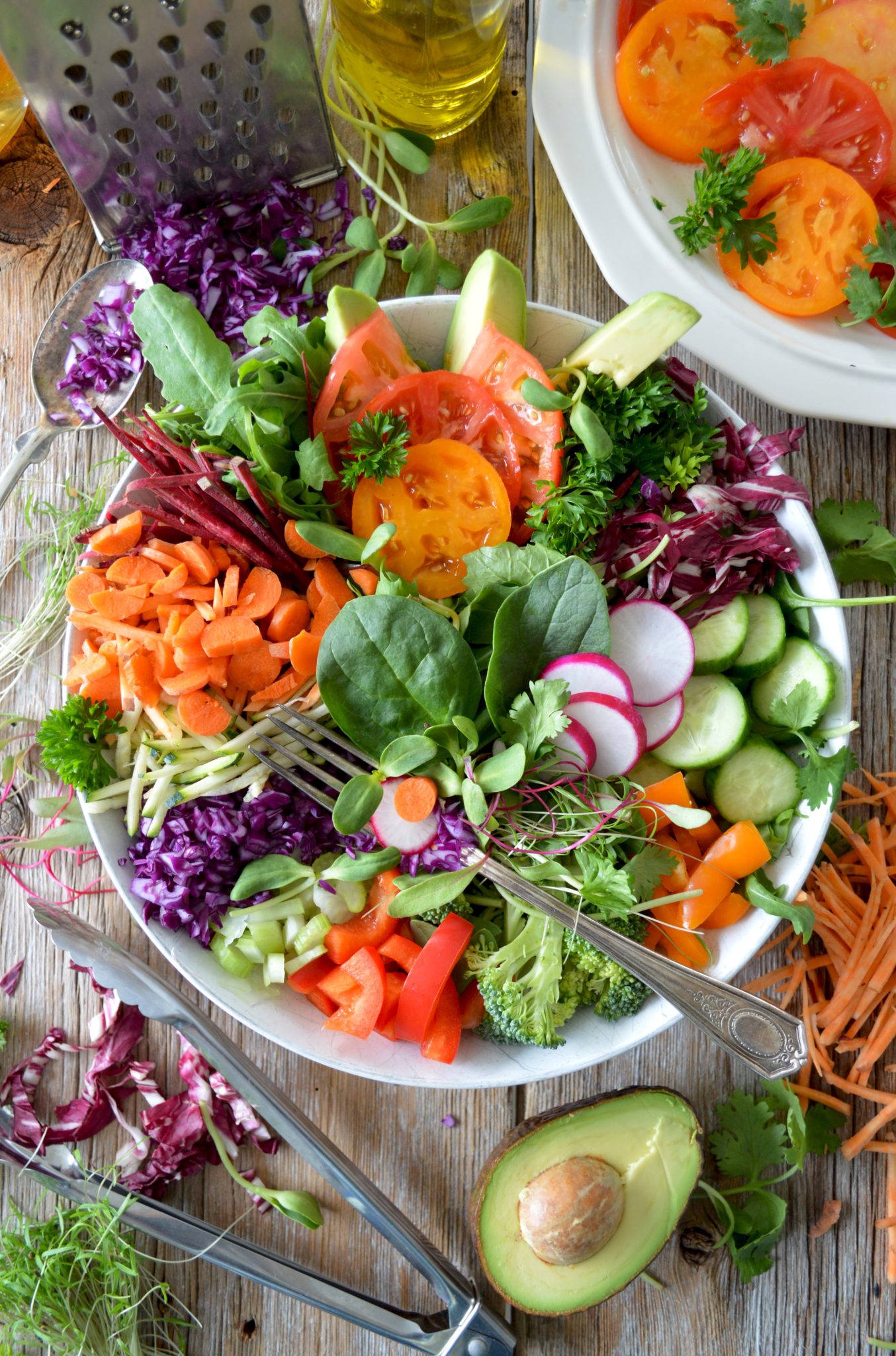
Do you still have a hard time imagining yourself eating a salad EVERY SINGLE DAY?
You are right. Again, it is easy to make one that is boring and bland.
By using your creative side and taking an artistic approach, however, you can go from plain to a rainbow. After all, you are in the kitchen to have fun and make something satisfying and light, right?
Here are some of my tricks!
Look at the basic guideline below and get ready! Pick an ingredient or two from each category and get inspired!
Choose a green salad base
My all-time favorites are romaine, spinach, kale, arugula, purple cabbage, green and red leaf lettuce.
Don’t hesitate to try something new. Experiment with some out of the ordinary but tasty options such as mustard or collard greens, watercress, escarole, radicchio, endive, frisee, or rucola.
Mix the base with other veggies for color, texture, and crunch
I like my tomatoes, cucumbers, mushrooms sliced or chopped. I often add thinly sliced green onions, radishes, carrots, or celery. Thinly sliced onion can add a pungent flavor or small florets of broccoli or cauliflower works well for volume. It is not typical in a salad, but my personal favorites are diced turnip roots or jicama for crunch.
Depending on the season, I also enjoy adding roasted root vegetables like yams, beets, turnips, sweet potatoes, or others like eggplant, brussels sprouts, asparagus, and of course, all the variety of squashes.
You may pick ingredients that complement a type of cuisine. For example, add corn and beans for a Mexican or add olives for a Mediterranean salad.
Fruit on your salad sound bizarre?
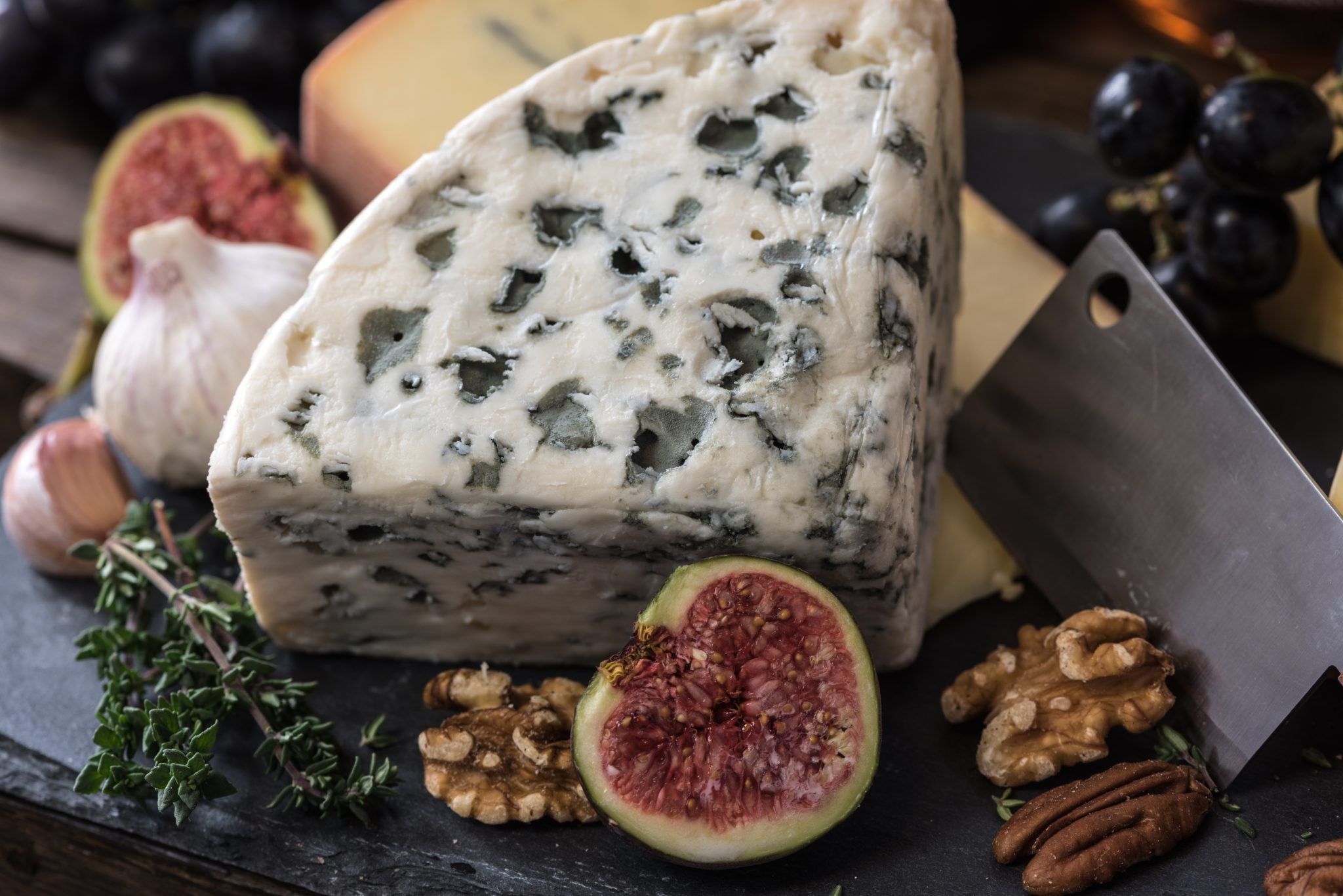
Besides avocados, try some of these based on what is in season: strawberries, mangos, figs, pears, apples, grapes, pomegranates, tangerines, kiwi, even papaya.
I love adding dried fruits like cranberries, apricots, and a variety of raisins for a bit of sweetness. I also enjoy tangerines on my Chinese Chicken Salad.
Add filling proteins
If you have any leftovers from the day prior like seasoned taco meat, pulled pork or carnitas, grilled, cooked or roasted chicken, diced ham, sauteed shrimp, use them. They are tasty additions and tested time savors.
If you are looking for a vegetarian option, add cooked beans or lentil, green peas, or my favorite, some nutrition-loaded chickpeas. Well-seasoned grilled tofu and hard-boiled eggs are great choices also, but please talk to your physician on the amount you may consume.
Sprinkle on an array of salad toppings
You can go nuts here. Literally! Slightly toasted seeds and nuts like sunflower seeds, walnuts, sliced or slivered almonds, cashews, pine nuts, macadamia nuts are all delicious.
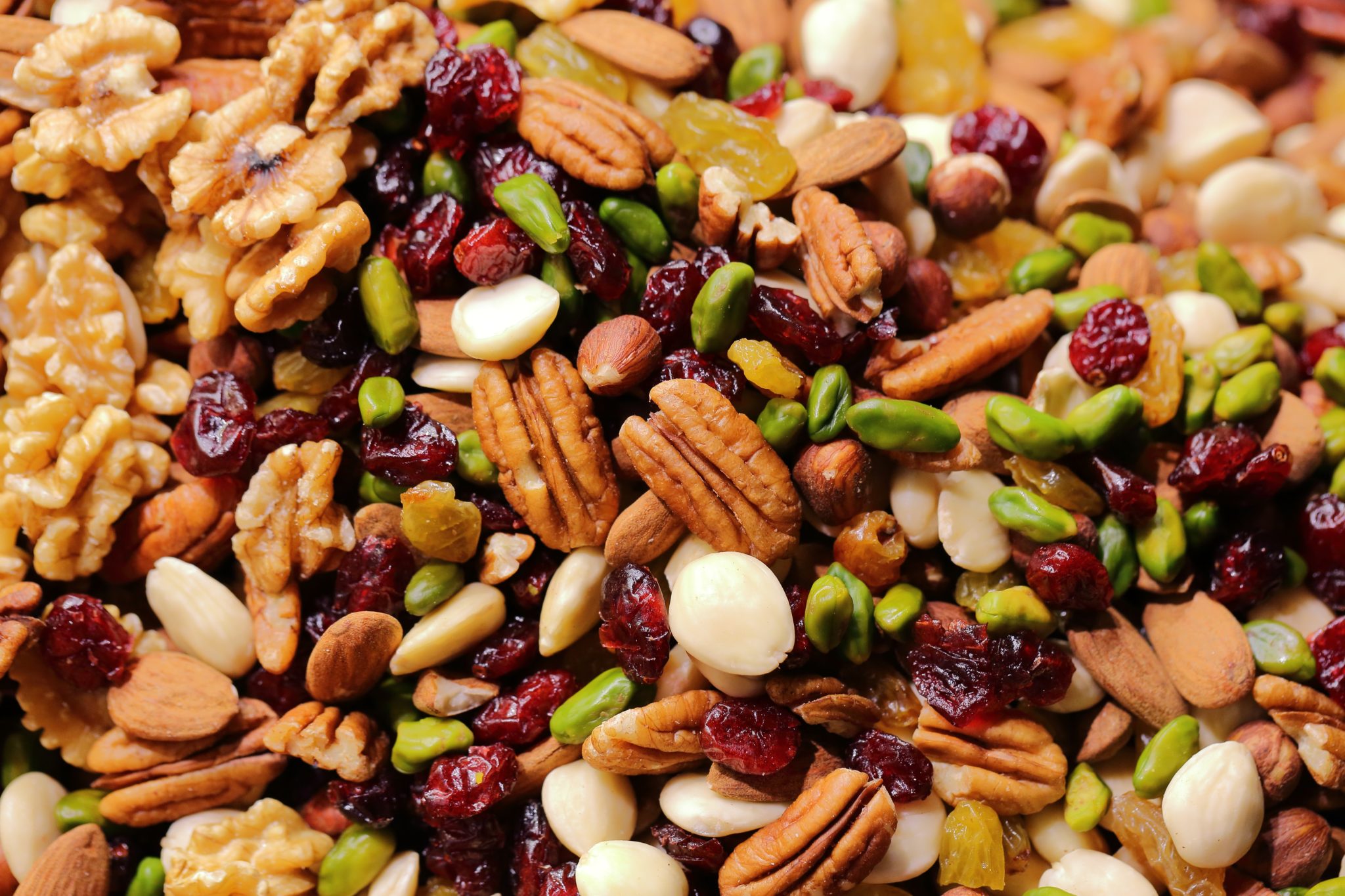
Chia, hemp, sesame, and flaxseeds are not only tasty but also nutritious.
Tortilla strips, fried onion rings, bacon bits can add lots of character.
Depending on how you feel about your waistline, add grated or shredded hard cheeses like parmesan, cheddar, Swiss, or Parmigiano-Reggiano.
Salty feta, blue cheese, or crumbly Mexican cheeses will enhance your dish. I have a soft spot for creamy goat cheese, nutty Gruyere, or aged Gouda.
Finish with dressings and seasonings
Have you ever tried making your own salad dressing? I have a home-court advantage here. Again, growing up in a chef family, making a home-made dressing was not a difficult task.
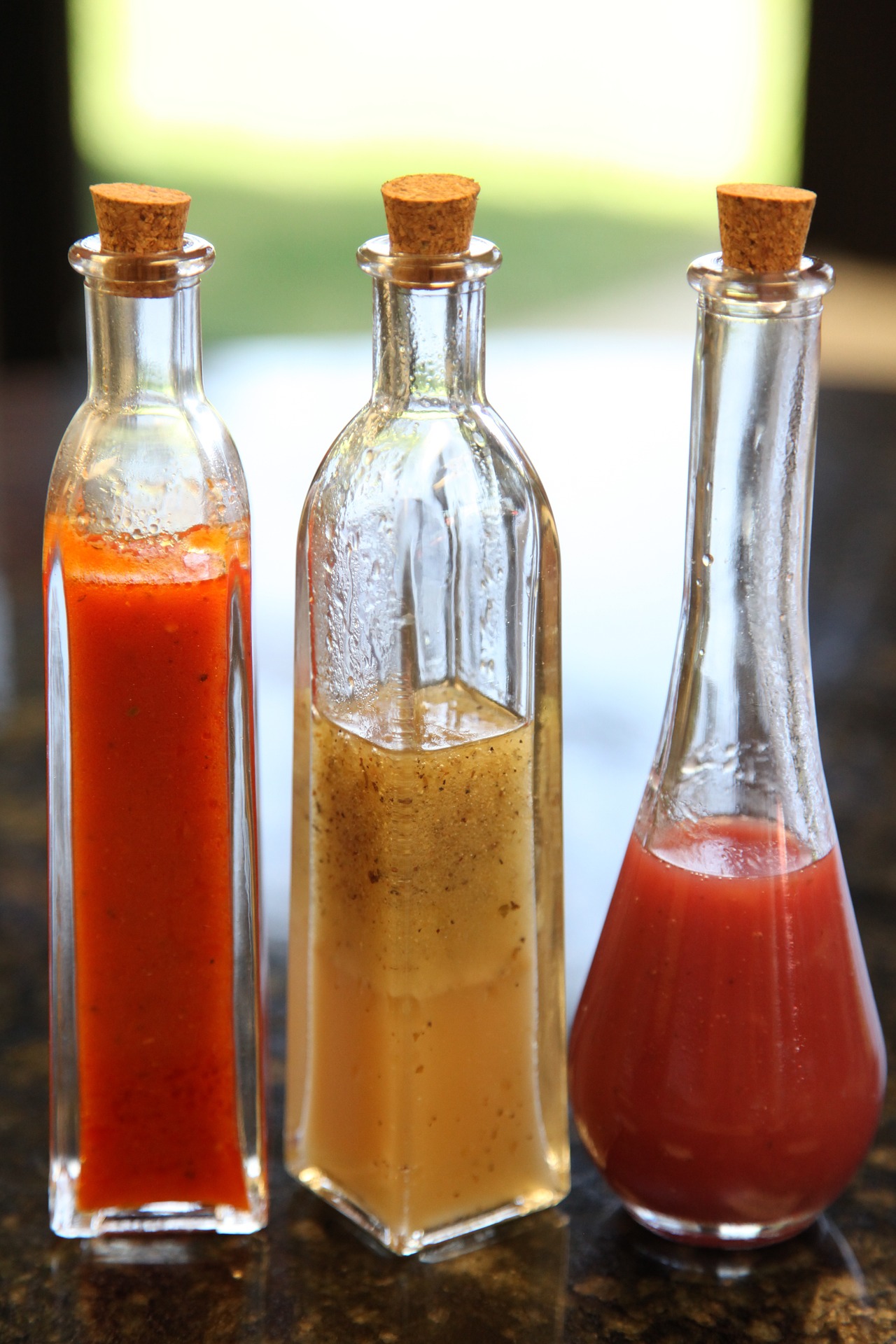
Since making a delicious dressing is more of a science, here is generally what you will need:
– 3 parts oil,
– 1 part acid,
– 1 part sweetener (optional),
– 1 part nut butter (optional),
– spices, fresh or dried herbs,
– salt and pepper to taste.
For a mayo, sour cream, or yogurt-based dressing, you can omit the oil and nut butter.
Some of my favorites are:
- Oils: high-quality oil like extra-virgin olive oil, flaxseed oil, avocado oil, sunflower oil, grape seed oil, pumpkin seed oil to emulsify
- Acids: apple cider, balsamic or red wine vinegar, lime, lemon
- Sweeteners: honey, agave or maple syrup, sugar to balance acidity
- Fresh herbs: dill, oregano, basil, mint, sage, cilantro, parsley, thyme, fenugreek, and rosemary for aroma
- Nut butter: almond or organic peanut butter, tahini for creaminess
- Spices/flavor ingredients: garlic, ginger, toasted sesame oil, chili flakes, tamarin, cumin, mustard, dried herbs, paprika, turmeric, soy sauce for character
Here are your steps to put all the dressing ingredients together:
- Start mixing your acid and spices first to penetrate spices.
- Whisk in your oil and if using any nut butter to emulsify.
- Add a touch of sweetness to make the taste more rounded and full.
- Season with salt and pepper to taste.
I am not a big fan of making big batches, but if I have any leftover dressing, I store it in a glass container and use it up by no later than the next day. I like dressing and serving leafy green salads right away as they will wilt fast.
On the contrary, I always leave time (a few hours even overnight) to refrigerate my mayo, sour cream, or yogurt-based salad for a well-rounded flavor.
A side note here. In my household, the options above with a green leaf base are considered lighter choices.
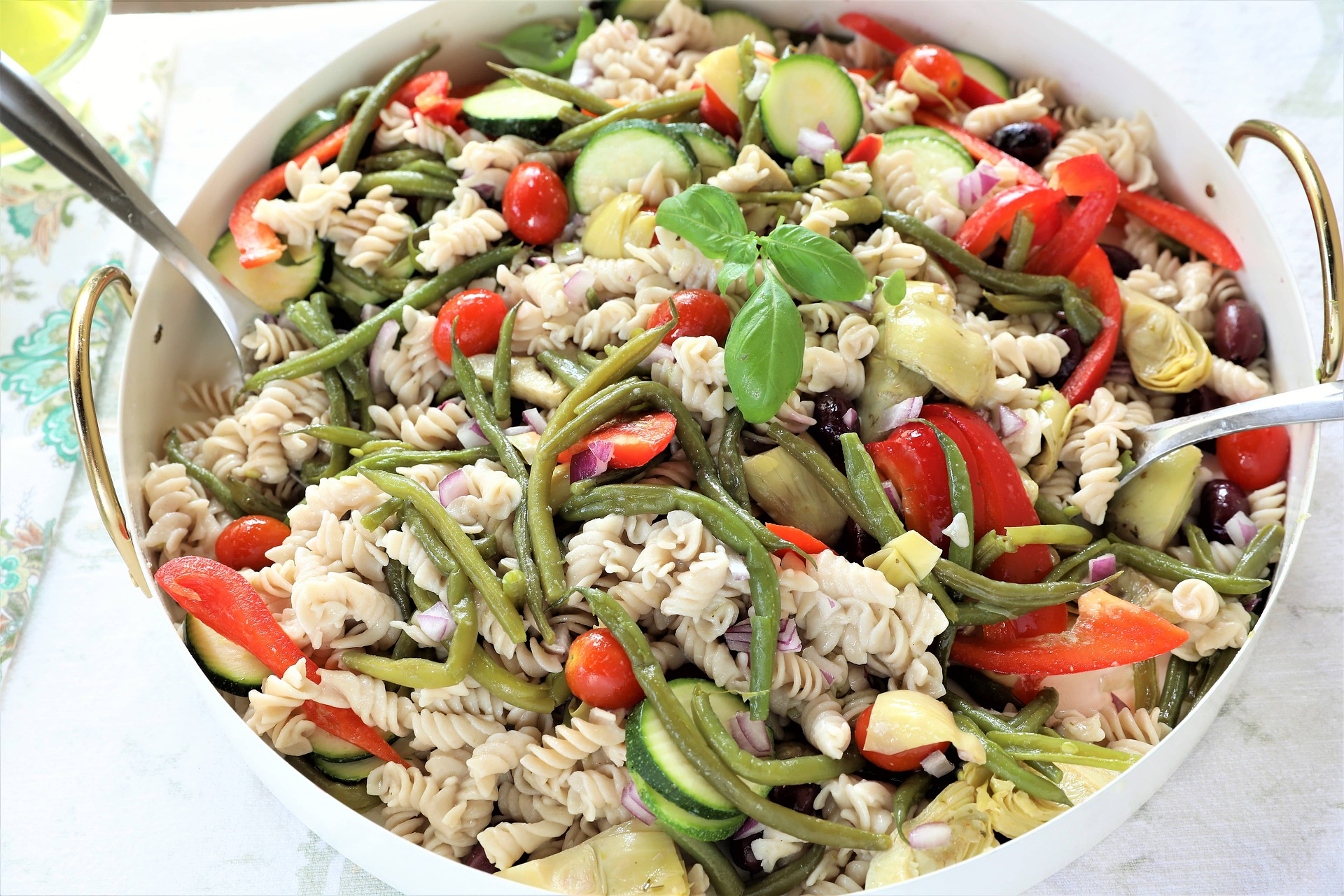
If you are looking for a dinner-worthy salad with no lettuce in them, don’t feel guilty, just be mindful about the amount you eat.
Roast your potatoes or other root vegetables, boil your pasta (wheat, gluten-free, egg-noodles), cook your hearty grains (quinoa, millet, barley, wild or brown rice, bulgur) and use one of these as a base. And if you are looking for some real comfort food, please read my blog post here.
Get creative with veggies and other ingredients. Both oil-based and creamy dressings work well here. Again, the more colorful your plate is, the more of a medley of nutrients you are creating.
I’m by no means an expert, but I hope these tips and tricks were helpful to some of you. Some are simple and straight forward, some you may know already but not doing, some you may be in the mood to try for the first time. Implementing all of these, however, can make a whole lot of a difference.
Do you have a salad you got inspired to make? I would love to hear from you!



